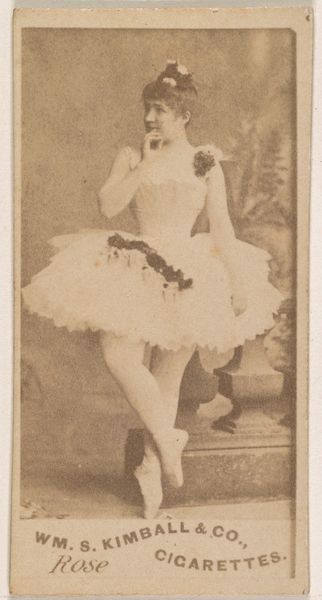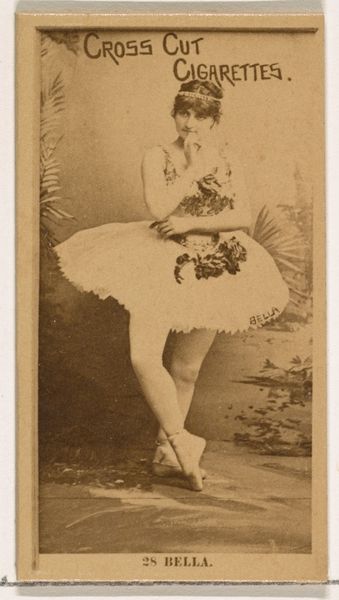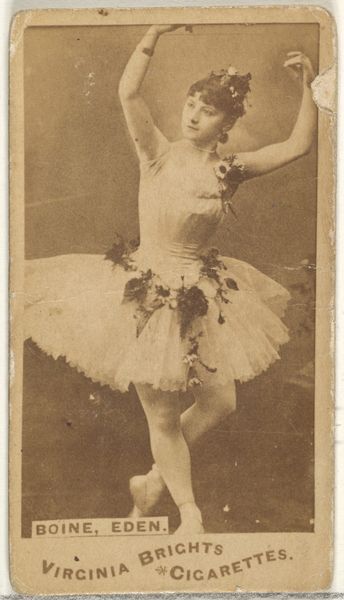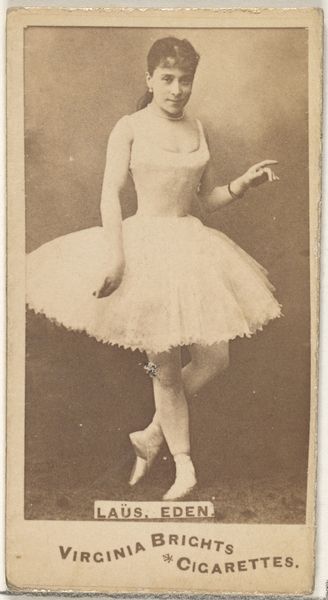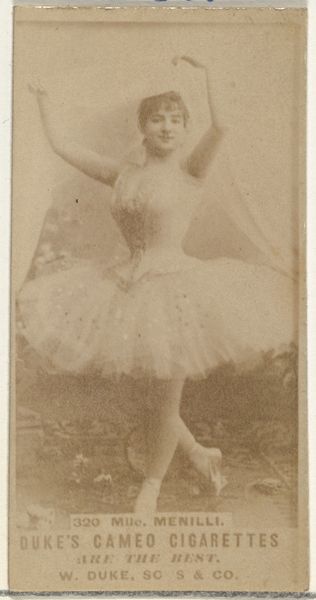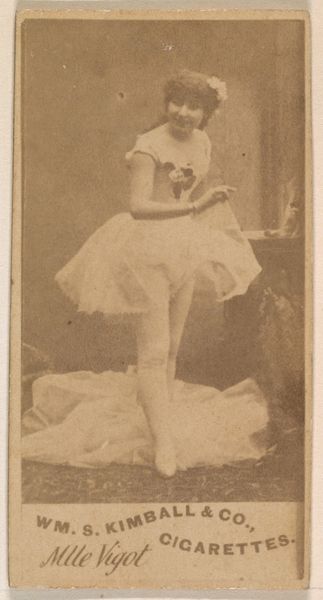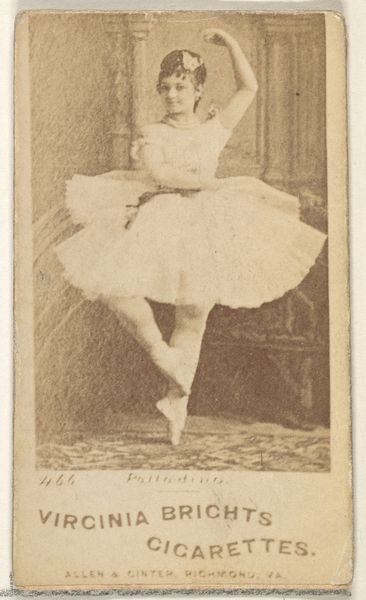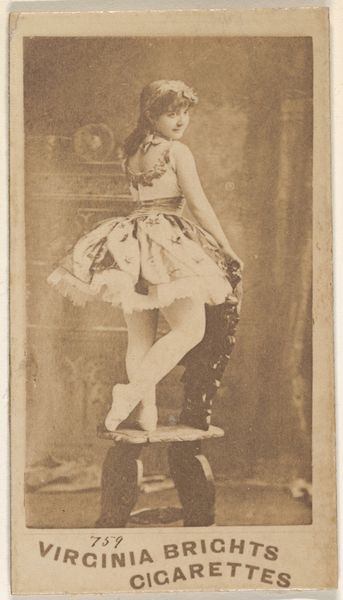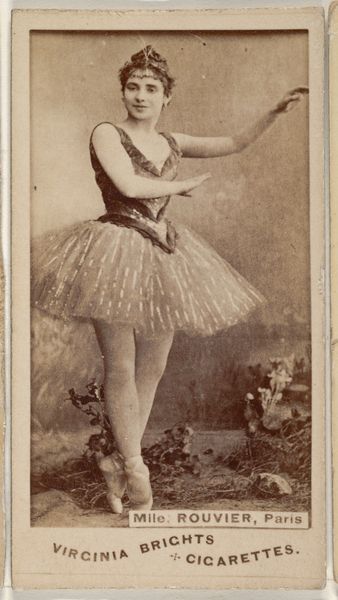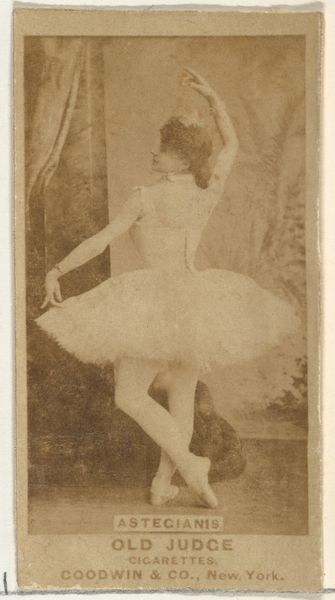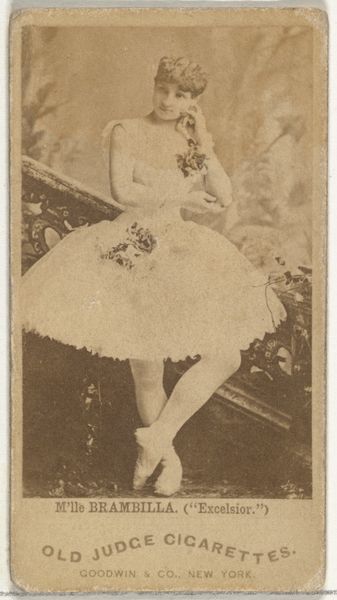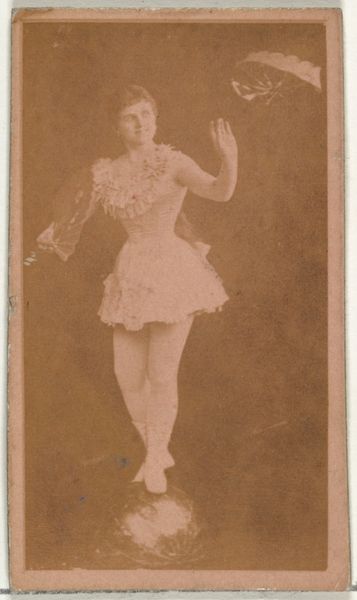
Mlle. Pelisola, Paris, from the Actors and Actresses series (N45, Type 1) for Virginia Brights Cigarettes 1885 - 1891
0:00
0:00
drawing, print, photography
#
portrait
#
drawing
# print
#
photography
#
pencil drawing
#
genre-painting
#
academic-art
Dimensions: Sheet: 2 3/4 x 1 3/8 in. (7 x 3.5 cm)
Copyright: Public Domain
Editor: So, this is "Mlle. Pelisola, Paris" from the Actors and Actresses series, it's from between 1885 and 1891, by Allen & Ginter. It’s…sepia toned. Looks like it's photography reproduced as a print, part of an advertisement. I'm curious about why ballet dancers were used to sell cigarettes? Curator: The key is understanding this object not as high art, but as a mass-produced commodity. Consider the economic context: cigarette cards like these were inserted into packs of Virginia Brights cigarettes. They were a marketing tool, part of a larger system of consumption and visual culture. The production of the image itself relies on both photography and printing technologies, but the *image*– that's pure spectacle, selling fantasy. It relies on both technology, the labor of the performers, and those consuming this culture. Editor: So it's less about appreciating artistic skill, and more about understanding production and marketing strategies? I'd always considered cigarette cards throwaway ephemera. Curator: Exactly! These cards, including this image of Mlle. Pelisola, were produced *en masse*. We should investigate the labor involved – from the tobacco workers, the photographers, and printers, to the ballet dancers themselves, performing for an audience who may then go on to buy cigarettes! Even the composition--consider its function as a collectible, the dimensions and paper quality dictate function, use, distribution, as part of everyday lives of that period's audience. Editor: That reframes everything! I’d been thinking about artistic intent and ballet, but it was capitalist machine at play. I am grateful for your guidance! Curator: These objects, these material artifacts, unlock stories that paintings sometimes obscure. Understanding their means of production is to recognize broader socioeconomic networks.
Comments
No comments
Be the first to comment and join the conversation on the ultimate creative platform.
